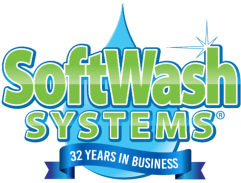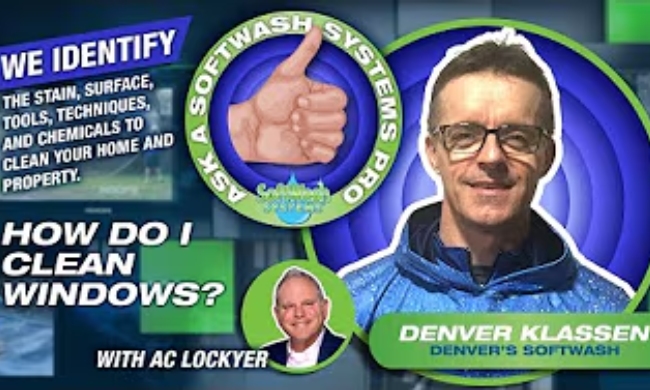HOW DO I CLEAN WINDOWS?
A professional viewpoint from Denver Klassen of Denver’s SoftWash
By Denver Klassen, Owner of Denver’s Window Cleaning
After nearly two decades in the window cleaning industry, I’ve seen it all—from small residential jobs to massive commercial contracts, from single-pane storm windows to modern high-performance glass. I started this work back in 2005, and in that time, I’ve learned that while window cleaning might seem simple on the surface, doing it professionally requires skill, technique, and an understanding of the materials you’re working with.
Today, my team and I operate out of Steinbach, Manitoba, where we service homes, businesses, and institutions across southeastern Manitoba. We clean everything from ground-level storefronts to windows six or seven stories high, using both traditional methods and the latest in pure water cleaning technology. Here’s a deep dive into what really goes into getting windows spotless—and keeping them that way.
A Window Isn’t Just Glass
One of the first things I teach my team—and often explain to customers—is that a window is more than just the glass. When we clean a window, we’re dealing with:
- The glass (obviously)
- The frame (wood, aluminum, vinyl, etc.)
- The sill
- The screen
- The gasket or caulking, and
- Sometimes storm windows or interior panes
These all collect different types of grime. On the glass itself, you’ll find dust, dirt, fingerprints, and bird droppings. Frames might have oxidation, especially on vinyl ones, which gives off that white, chalky residue. Sills can trap water, bugs, and algae. And screens? They’re a whole other beast. A dirty screen can make even a freshly cleaned window look dull once the light hits it.
When we talk about cleaning a window, we’re talking about restoring all those parts—not just the shiny center square.

The Traditional Method: Mop and Squeegee
We still use the classic mop-and-squeegee method every day. It’s timeless, effective, and surprisingly technical.
Here’s how it works:
We start with a T-bar mop (we usually call it a scrubber) soaked in a soap-and-water solution. We scrub the window thoroughly, then remove all the dirty water with a rubber-bladed squeegee. The result is a streak-free finish—if you’ve done it right.
Squeegee Technique: There’s a Right Way
There are two main ways to use a squeegee:
- Straight pull – Great for beginners and often the fastest for regular-sized windows.
- Swirl technique (also called the “S-pattern”) – This is an advanced method where you snake the squeegee across the glass in one continuous motion. It looks cool and it’s incredibly efficient when mastered.
We train all our employees to do both. At our shop, we have a training glass mounted on the wall—affectionately named the “Miyagi window” after Mr. Miyagi from The Karate Kid. It’s where new hires practice for hours, honing their movements until it becomes second nature. We even make them practice using both their dominant and non-dominant hands. Why? Because on a ladder, switching hands is much safer and faster than repositioning yourself or moving the ladder.
What’s in the Water Matters
One of the easiest mistakes to make is getting the soap-to-water ratio wrong. Too much soap, and the glass gets smeary. Too little, and your squeegee skips and squeaks.
As a rule of thumb, we use one tablespoon of soap per gallon of water. But that’s just a starting point. If the window’s extra dirty or the water isn’t flowing smoothly under the squeegee, we might adjust it. We also pay close attention to the type of glass we’re working on, which brings us to…
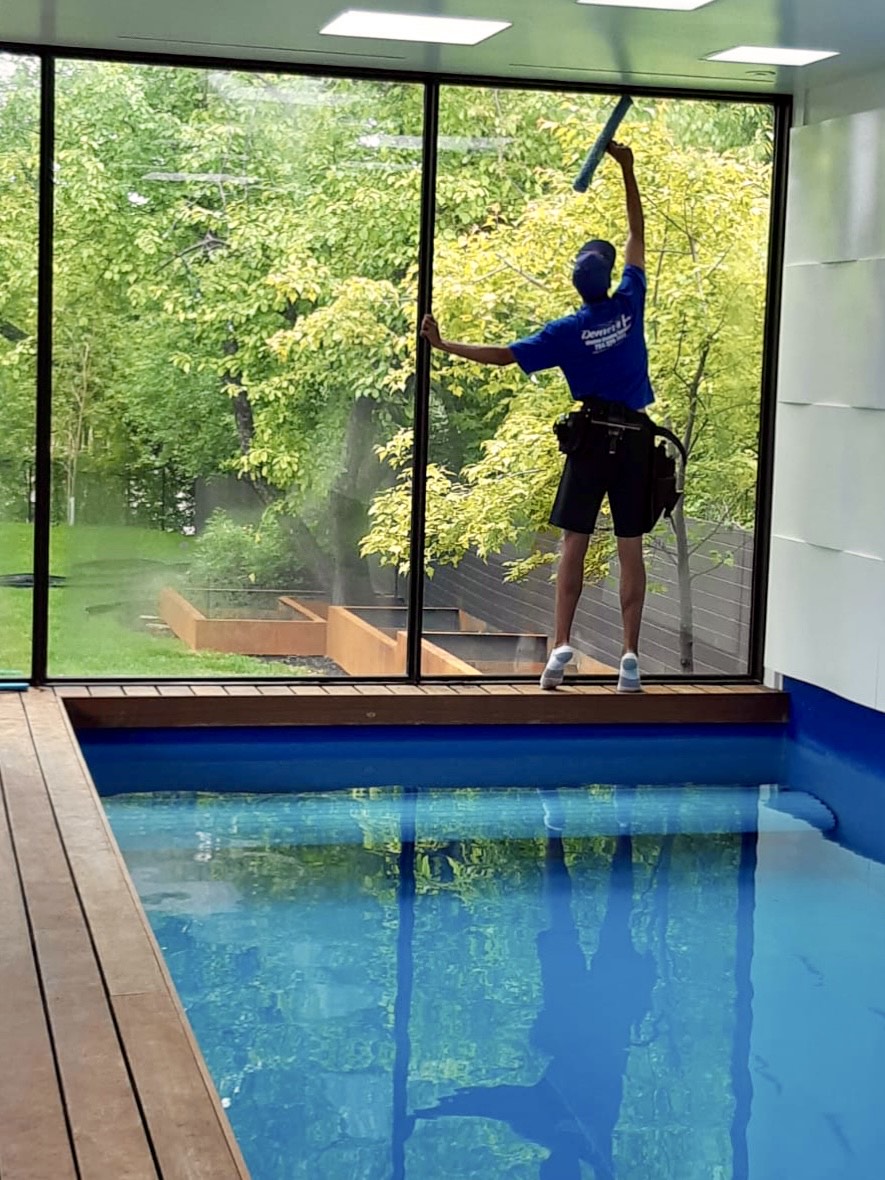
Hydrophilic vs. Hydrophobic Glass
Glass isn’t just glass anymore. Modern windows often have coatings that make a huge difference in how they behave when wet.
- Hydrophilic glass loves water. Water sheets off the surface, making it easier to rinse and dry evenly.
- Hydrophobic glass repels water. Water beads up and rolls off—but in a way that often leaves visible spots unless you rinse it carefully.
These differences are crucial, especially when we move into pure water cleaning.
Pure Water Window Cleaning: The Game-Changer
In the last 10 to 20 years, pure water cleaning has revolutionized the industry. Instead of using soap, we clean glass with deionized water that’s been stripped of all minerals using a multi-stage filtration system—typically carbon, sediment, and reverse osmosis filters, followed by a DI (deionization) resin tank.
This water is “hungry”—it wants to bond with minerals and dirt. When we brush it onto the glass and rinse it thoroughly, it pulls away contaminants and then evaporates without leaving a trace. No squeegees needed.
But It’s Not Foolproof
Here’s the thing: pure water cleaning only works if the water is truly pure. In Steinbach, our tap water can have 300–500 parts per million (PPM) of dissolved solids. Even filtered water from a garden hose might still leave spots unless you bring it down to zero PPM.
We use portable or van-mounted filtration systems and carry TDS (total dissolved solids) meters to monitor our water at all times. If the TDS creeps above 10, we change the filter or resin immediately.
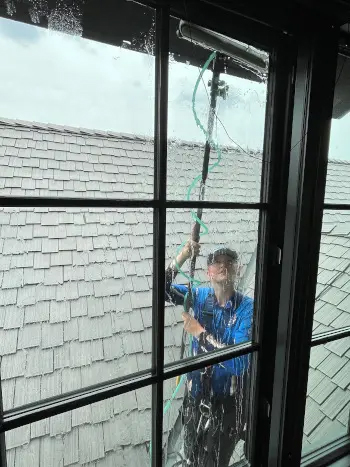
The Pure Water Process: It’s All in the Details
We follow a specific sequence for using pure water on exterior windows:
- Start with the frames – Especially on vinyl windows, which oxidize and drip chalky water. If you skip this step, that gunk will run down after you’ve cleaned the glass and leave streaks.
- Brush thoroughly – We use carbon fiber poles (like the ones from Reach-iT) and specialty brushes that include a rinse bar for precision.
- Let it dwell – Sometimes you need to let the water sit for a few seconds before rinsing.
- Rinse slowly and evenly – Especially on hydrophobic glass. If you rinse too fast, water beads and leaves spots.
A lot of people think they can just spray and go, but real professionals know how much care it takes to get that spot-free finish.
Tools of the Trade
We use a mix of brands and tools depending on the job:
- Squeegees: Unger, Ettore, Sorbo for different window sizes and shapes.
- Water-fed brushes: I like Reach-iT’s brushes for their design and efficiency. They allow you to rinse and scrub simultaneously, saving time.
- Poles: We use carbon fiber poles for height and control—sometimes up to 65 feet tall. That’s a 7-story building from the ground.
We also train our crews on ladder safety, rope work (for higher jobs), and glass awareness. Some glass is soft and scratches easily. You need to know what you’re dealing with before you start scrubbing.
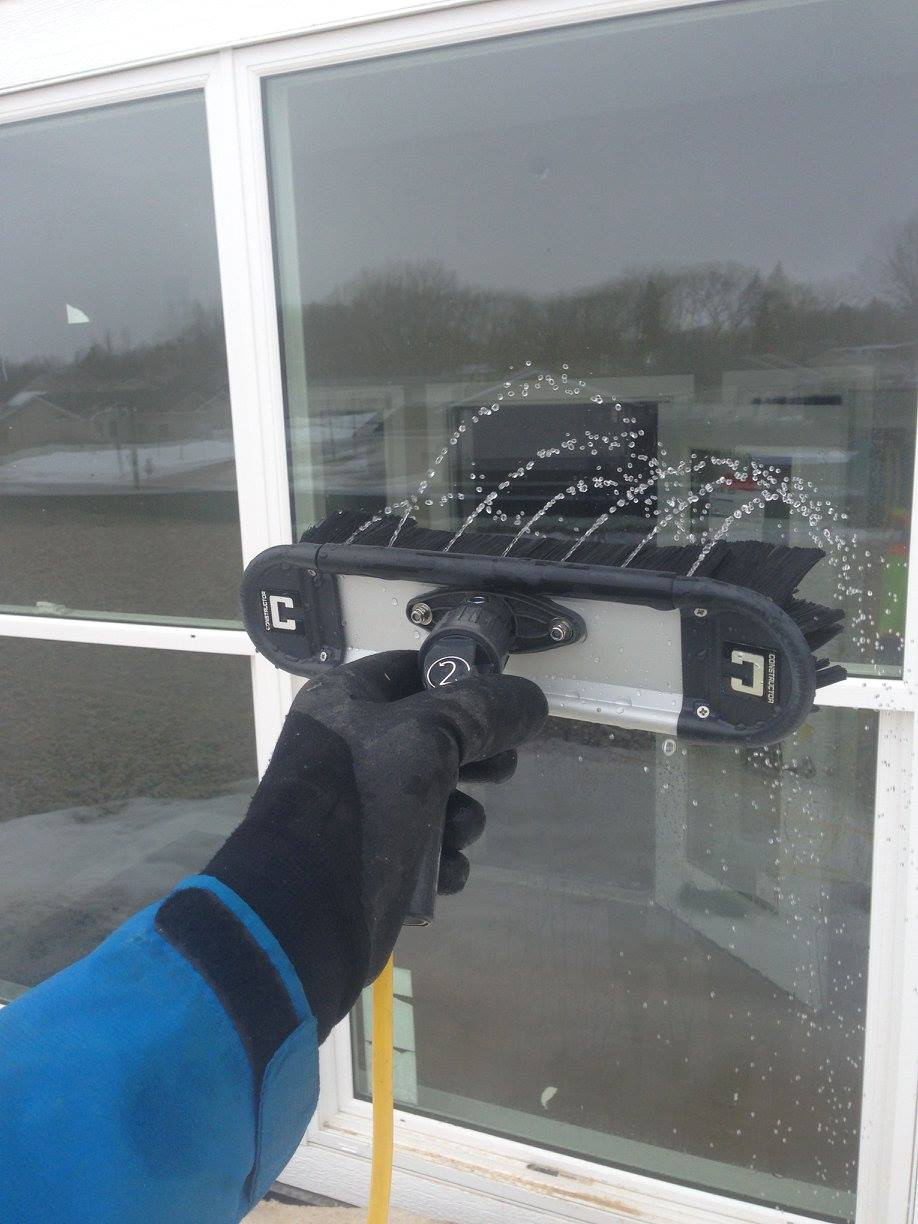
Why This Matters
Clean windows aren’t just about aesthetics—they affect how light enters a space, how a home or business is perceived, and how people feel in that space. If a customer walks up to a building and sees dirty windows, it sends a message. The same goes for homeowners. Clean windows make your house feel brighter, fresher, and better cared for.
Final Thoughts: Do It Right, or Call a Pro
If you’re a homeowner trying to get better results, pay attention to the tools, the technique, and the water you’re using. Don’t just Windex and wipe—it won’t last, and you’ll get streaks and residue.
And if you’re running a business or managing a facility? Hire a trained team or bring in a consultant. I’ve trained crews, written SOPs, and helped companies upgrade their window cleaning systems. Sometimes it pays to bring in experience.
Because in the end, good window cleaning is part science, part art, and all about the details.
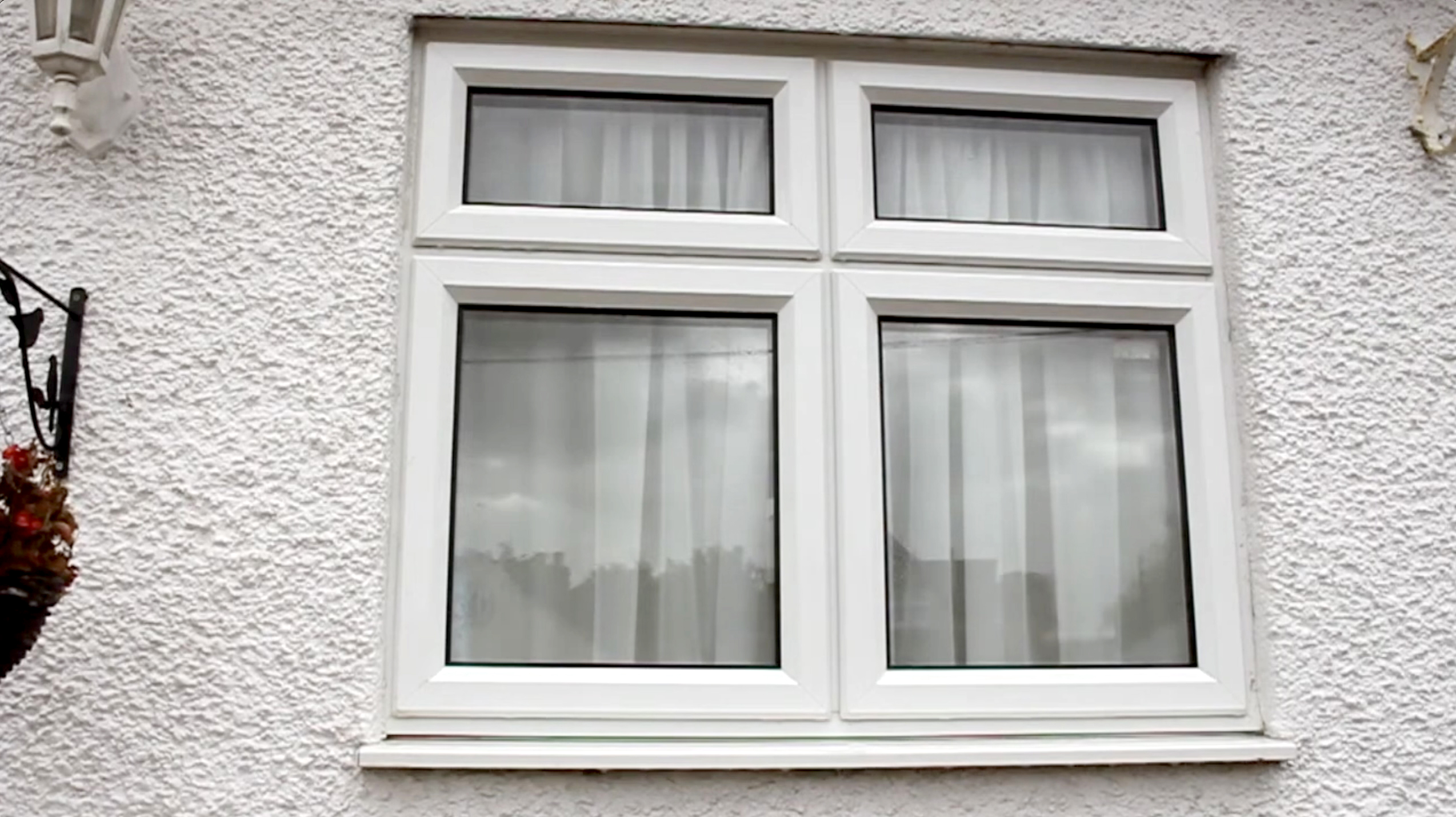
WATCH OUR PODCAST
FAQs About Window Cleaning
There are some maintenance tasks that both homeowners and business owners dread. Window cleaning is typically high on that list. However, cleaning the exterior of your windows is key for many reasons, including their longevity. At SoftWash Systems, window cleaning is one of the many services we offer. Keep reading to see answers to some of the common questions we get about this service.
What method do you use during window cleaning?
Our team uses the softwashing method when performing all our exterior cleaning services, including window cleaning. This is our method of choice since it is best for a wide range of surfaces and lasts longer than other methods of cleaning.
Is there any risk of damaging the windows or frame during the service?
No, which is one of the many reasons why we choose softwashing. Because it uses low-pressure water and environmentally friendly cleaning solutions, it is ideal for all window types, frames, and seals. Additionally, we take care with any materials surrounding the windows and always rinse completely.
Does softwashing leave streaks or residue on glass?
The softwash technique we use removes the majority of grime and buildup. In addition, we take steps to remove any streaks that may appear, leaving your windows with a crystal-clear finish.
How frequently should I have my windows cleaned?
We recommend cleaning your windows at least twice a year to preserve clarity, avoid accumulation, and extend the life of your glass and frames, particularly in locations with heavy pollen, salt, or dust exposure.
What kind of cleaning solutions do you use for windows?
We use biodegradable, non-toxic cleaners to safely remove dirt, algae, and grime without harming plants, pets, or window surfaces.
I GIVE UP!
If you think you can’t do it and it’s better to call a professional, please fill the form and we will contact you.
